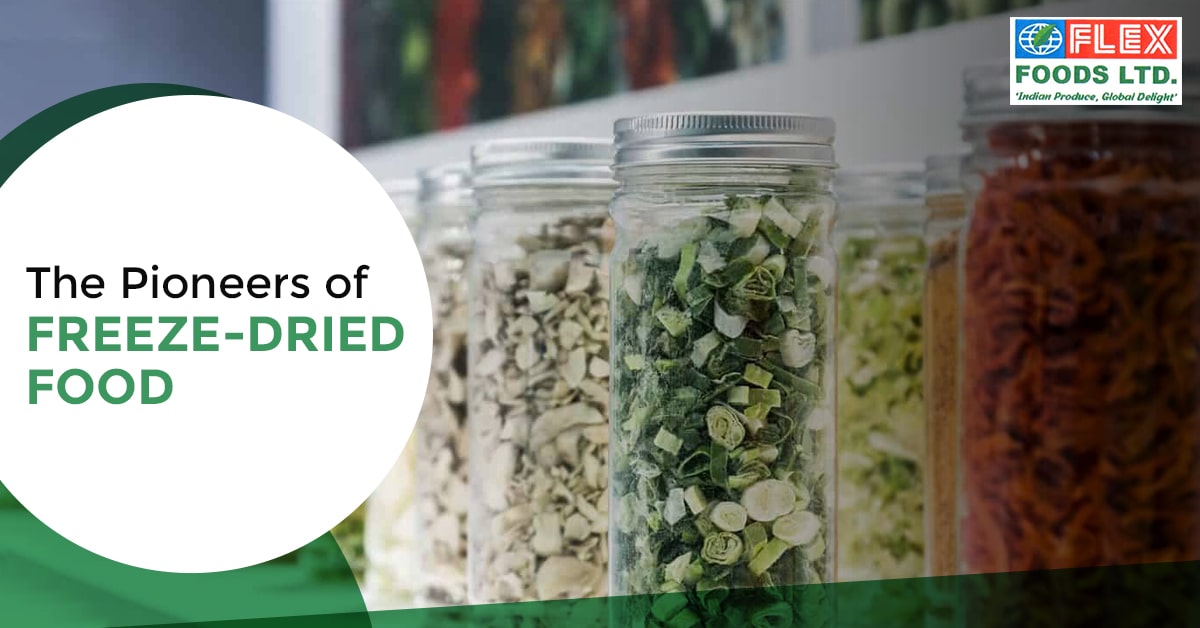In recent years, the global demand for frozen foods has surged, driven by factors such as convenience, changing dietary habits, and advancements in food processing technology. India, with its vast agricultural resources and burgeoning food processing industry, has emerged as a significant player in the international frozen food market.
In this guide, we'll delve into the intricacies of frozen food export from India, exploring the market potential, regulatory framework, logistical considerations, and essential tips for success.
Understanding the Market Potential
India's frozen food export industry has witnessed remarkable growth in recent years, fueled by increasing demand from both developed and emerging markets. The country's diverse agricultural sector provides a wide array of raw materials for processing into frozen products, ranging from fruits and vegetables to seafood, poultry, IQF frozen vegetables, and ready-to-eat meals. Additionally, the growing middle-class population and changing consumer lifestyles have led to a surge in demand for convenient and nutritious frozen food options.
Key Export Categories
- Seafood: India is one of the largest producers of seafood globally, offering a wide variety of fish, shrimp, and other aquatic products for export in frozen form. Popular varieties include black tiger shrimp, vannamei shrimp, Indian mackerel, and ribbon fish.
- Fruits and Vegetables: With abundant agricultural resources, India exports a diverse range of frozen fruits and vegetables, including mangoes, strawberries, green peas, okra, and spinach. These products cater to both retail and food service segments worldwide.
- Poultry and Meat: The Indian poultry and meat industry has also ventured into frozen food exports, offering products such as frozen chicken cuts, buffalo meat, and processed meat items to international markets.
Regulatory Framework
Exporting frozen food from India entails adherence to various regulatory requirements and quality standards to ensure compliance with international food safety norms. Key regulatory bodies and standards include:
- Food Safety and Standards Authority of India (FSSAI): FSSAI regulates and monitors food safety standards in India, ensuring that exported frozen food meets the prescribed quality and hygiene standards.
- Agricultural and Processed Food Products Export Development Authority (APEDA): APEDA plays a crucial role in promoting and regulating the export of agricultural and processed food products, including frozen foods. It provides certification and facilitates market access for exporters.
- International Standards (ISO, HACCP, etc.): Exporters must comply with internationally recognized standards such as ISO 22000 and Hazard Analysis and Critical Control Points (HACCP) to ensure food safety and quality management systems.
Logistical Considerations
Successful frozen food export relies heavily on efficient logistical operations to maintain product integrity and quality throughout the supply chain. Key logistical considerations include:
- Cold Chain Management: Maintaining the cold chain is paramount in preserving the quality and safety of frozen vegetables in India and other such food products. From processing facilities to storage warehouses and transportation, robust cold chain infrastructure is essential to prevent thawing and spoilage.
- Packaging and Labeling: Frozen food packaging must be designed to withstand low temperatures and protect products from physical damage and contamination. Clear and informative labeling, including product specifications, ingredients, and storage instructions, is also crucial for international trade compliance.
- Transportation Modes: Depending on the destination and product requirements, exporters can choose between various transportation modes, including refrigerated containers (reefers), air freight, and sea freight. Each mode has its advantages and challenges, so careful consideration is necessary to optimize cost and delivery time.
Market Entry Strategies
Entering foreign markets requires strategic planning and market research to identify target regions, understand consumer preferences, and navigate regulatory complexities. Some key market entry strategies for frozen food and freeze-dried fruits exporters include:
- Partnering with Distributors: Collaborating with local distributors or importers familiar with the target market can facilitate market penetration and distribution network establishment.
- Participation in Trade Exhibitions: Trade fairs and exhibitions provide valuable opportunities for exporters to showcase their products, network with potential buyers, and gain insights into market trends and preferences.
- E-commerce Platforms: Leveraging e-commerce platforms and online marketplaces can broaden market reach and enable direct-to-consumer sales, especially in regions with a growing demand for imported frozen foods.
As the global appetite for frozen food continues to grow, India stands poised to capitalize on its agricultural abundance and food processing capabilities to become a significant player in the international market. By understanding the regulatory framework, investing in logistical infrastructure, and adopting strategic market entry approaches, Indian frozen food exporters can unlock lucrative opportunities and establish a strong foothold in the global arena. With the right approach and commitment to quality, the future of frozen food export from India is undoubtedly promising.

